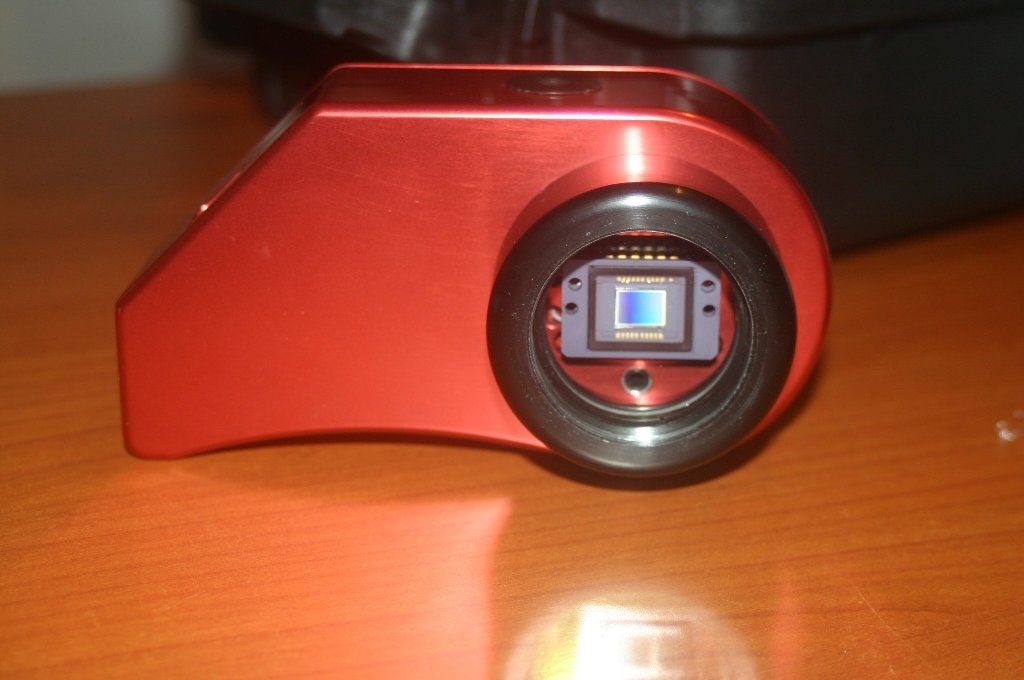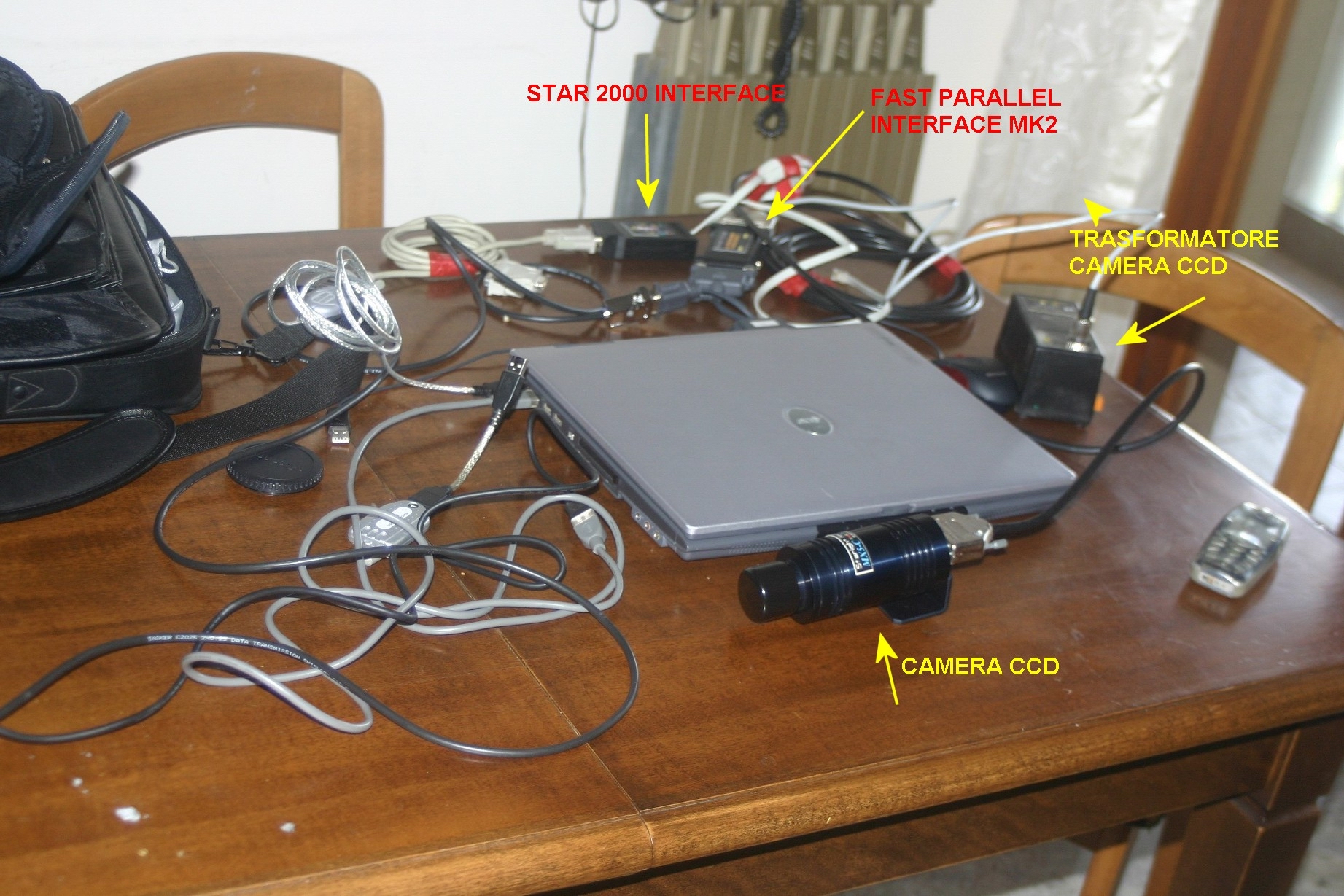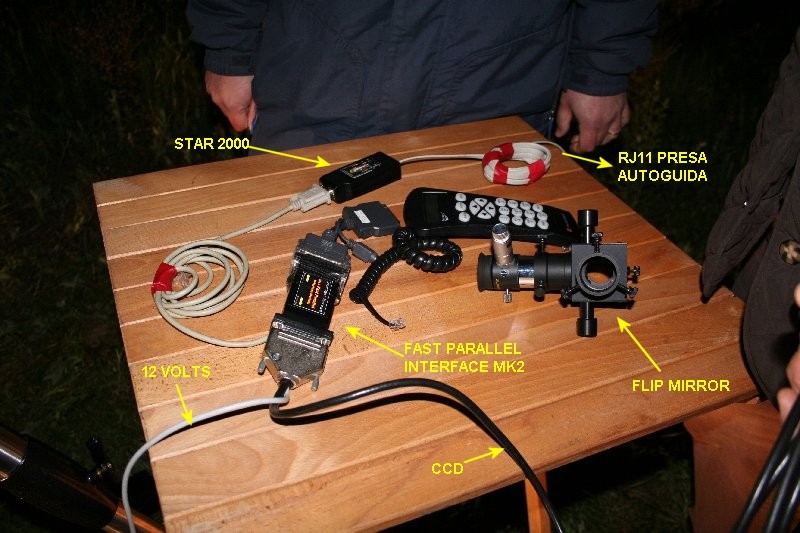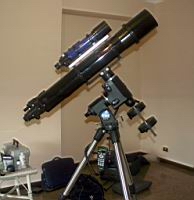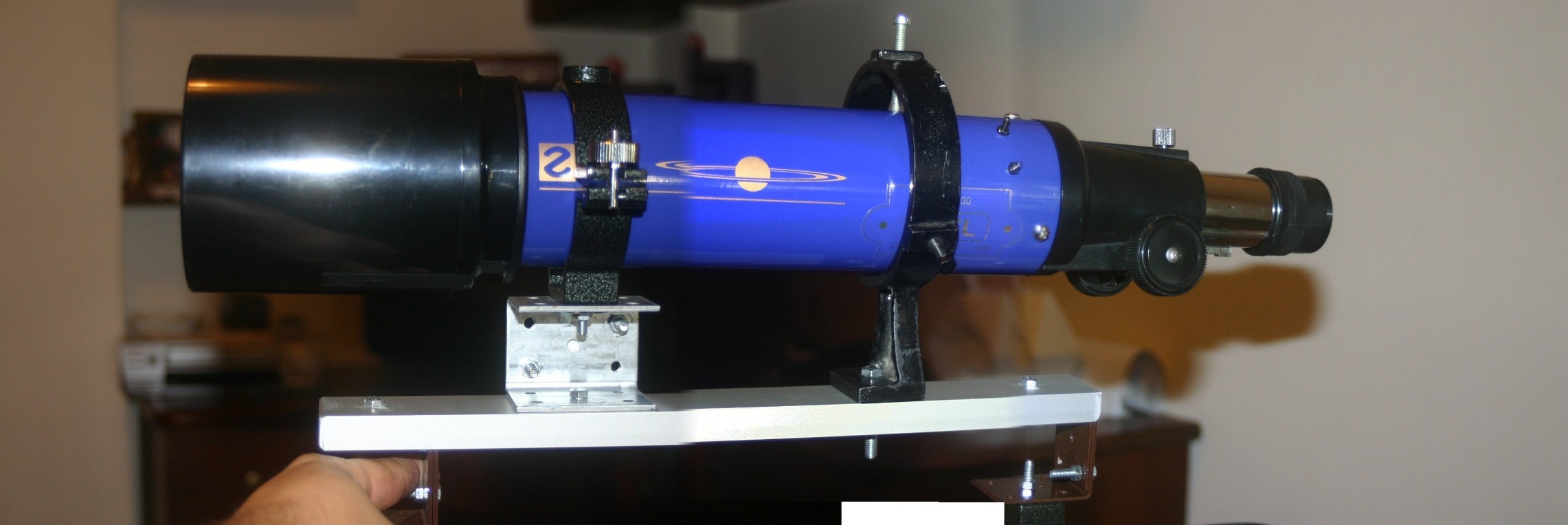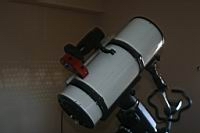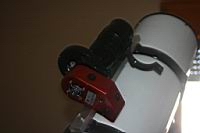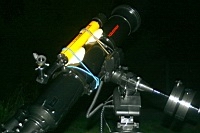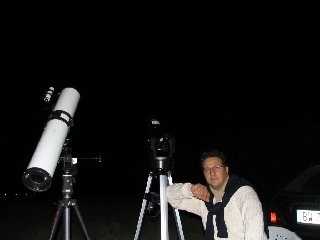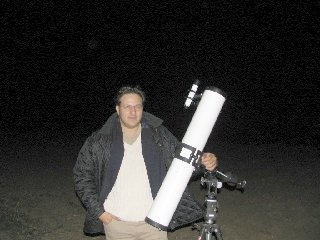
 STRUMENTAZIONE
PRECEDENTE
STRUMENTAZIONE
PRECEDENTE
setup del 23 dicembre 2007 (aggiunta camera
mx916)
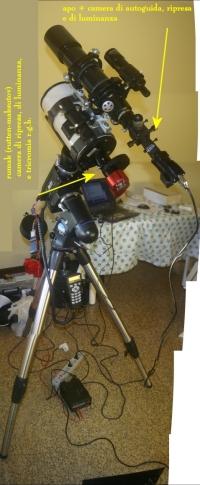
| 27
Agosto 2007 (aggiunto secondo cercatore) |
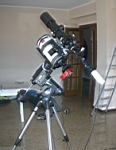
|
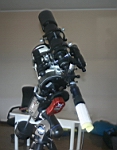
|
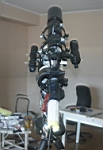
|
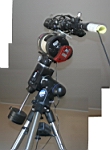
|
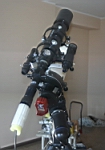
|
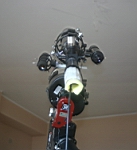
|
| |
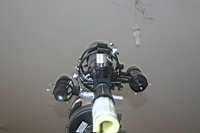
|
|
| setup del 24 Agosto 2007 (aggiunti anelli decentrabili) |
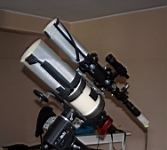
|
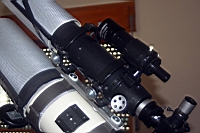
|
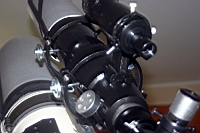 |
setup precedente:
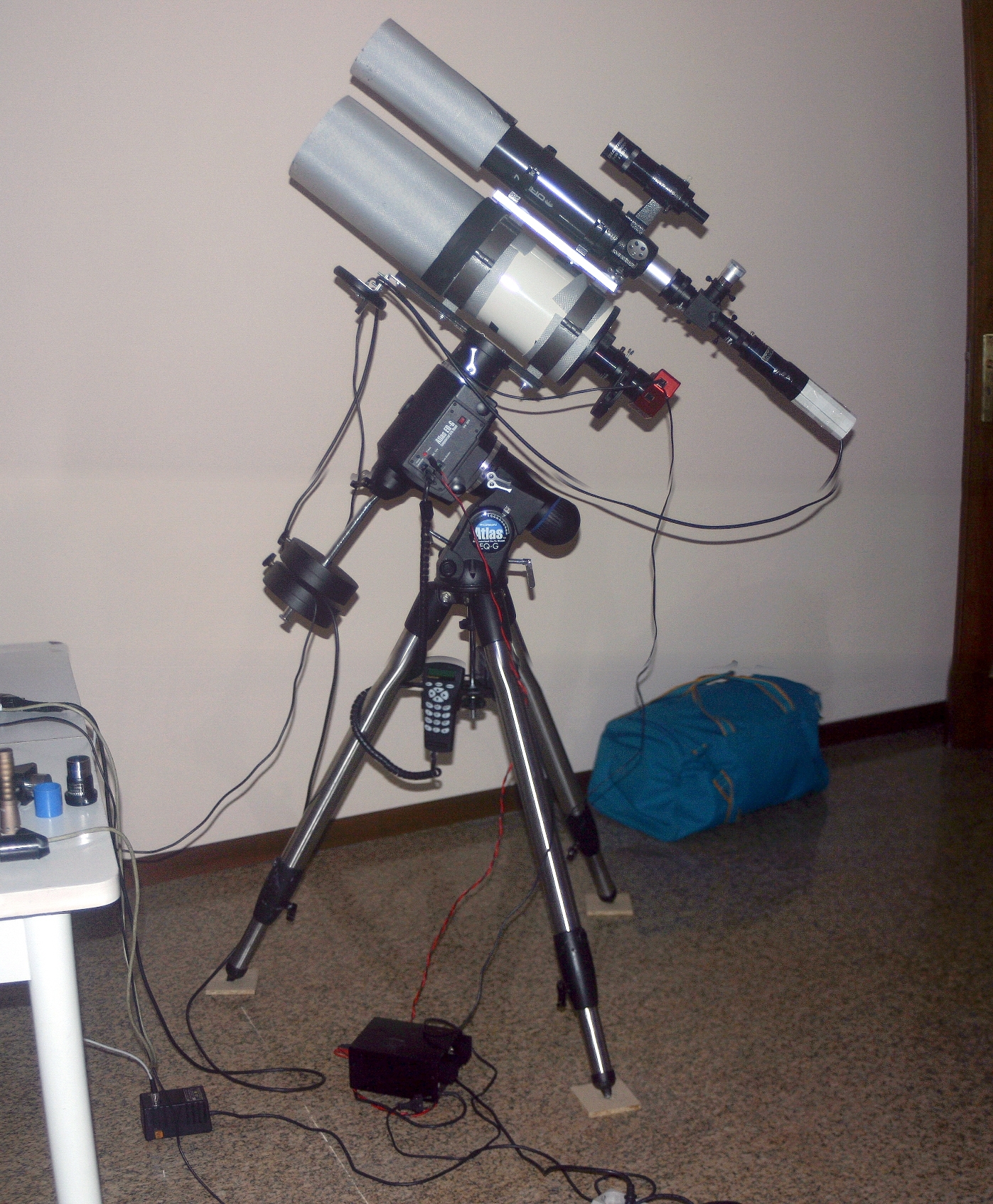

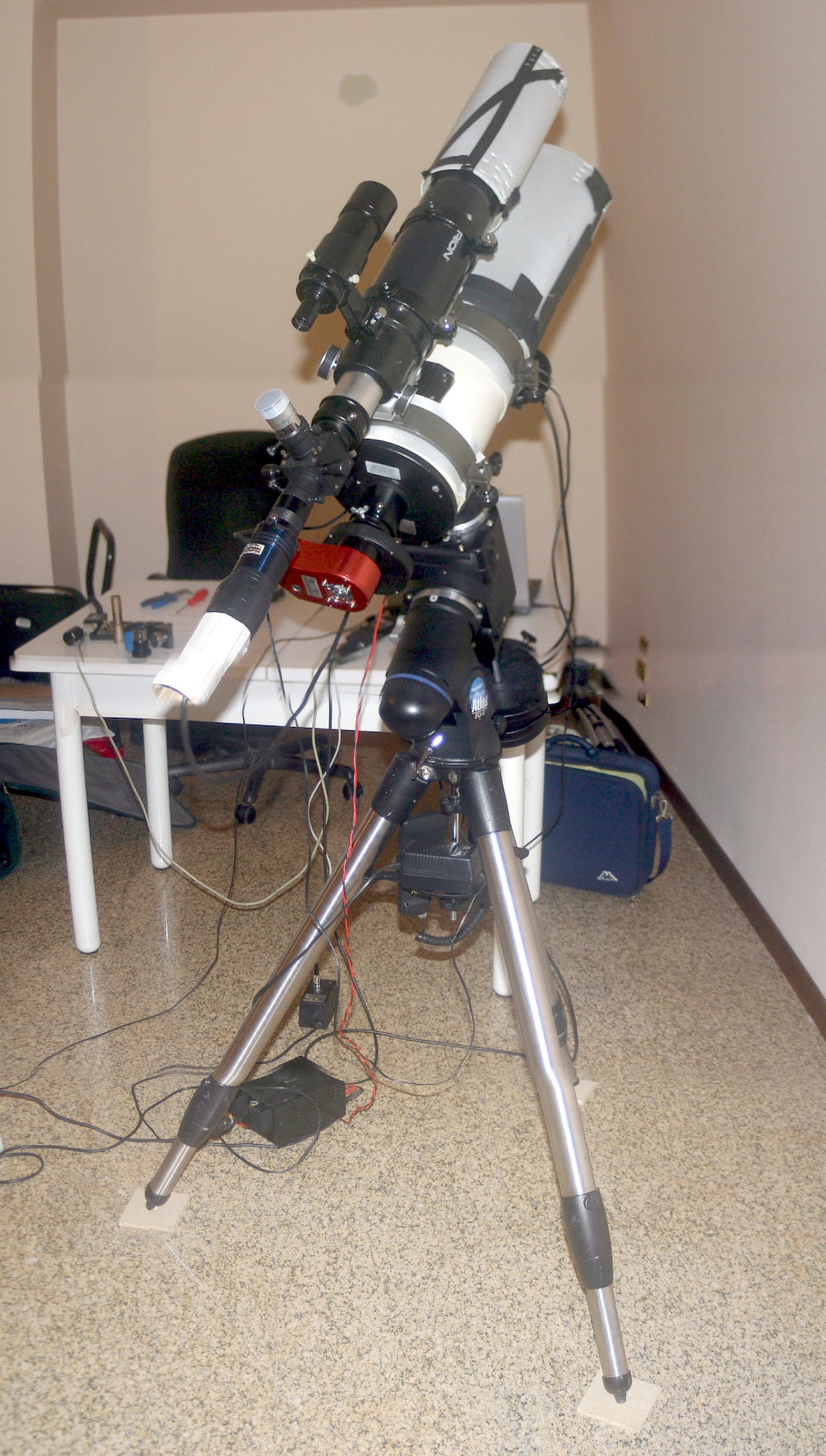
While autoguiding,
AA has to know how fast your mount is moving when
it 'pushes
a button' in order to correct the position of the guide star.
This is expressed
in 'pixels per second'.
It depends
on:
- the 'guide
speed' setting of your mount. Common 'guide speeds' are
1.5x or 2x
sideral speed.
- the effective
focal length of your system ( including focal reducer
or barlow
)
- the pixel
size of the chip of your camera
- the declination
of the object you are imaging
If you know
all this, the speed can be calculated. The speed in declination
will always
be the same, but the speed in R.A. will depend on cos(declination).
See below
how to calculate this.
One way to
find out the speed empirically is to do the following :
- put a star
in your field of view and put on the West side.
- start an
exposure of 1 minute or so
- pusch the
"+R.A." button on the control of your mount for 30 seconds
and then release
it
- now, the
resulting
image will show a long star trail
- measure
the x-position of the start of the trail ( by putting the cursor
there) and
the end of the trail. So : you will know how many pixels long
the trail
is. Divide this by 30 and you will know the speed in pixels per
second.
The 'calibration'
routine of AA will in fact just do the same : after you
have marked
a guide star, it will note the position of it. Then, it will
move the mount
during a certain time and measures how many pixels the star
has been moved.
This way, it knows the speed.
I never use
this however. It does not always give optimal results because
it only measures
over a rather short time interval.
For different
declinations, the speed in R.A. will be different. However,
remember that
the guiding routine in AA works 'adaptive'. This means that it
will learn
'on the fly' how many (fractional) pixels it moves after a correction
of a certain
time. So, if you calibrate with an object at about 45 degrees
declination,
you will have fair initial results. Best is to let the system
'exercise'
for a while ( 1 minute or so ) before you start your exposure.
Calculation
of guide speed in pixels per second (pps)
-----------------------------------------------------
pps in declination
= (MS-1)/(B*240*arctan(P/1000F)) pixels per second
pps in r.a.
= (MS-1)*cos(d)/(B*240*arctan(P/1000F)) pixels per second
Here is :
MS = Mount
speed, related to sideral speed, such as 1.5x or 2x (**)
( Is never
< 1, otherwise you could not move in positive direction!)
B = the binning
you are using. 1 = 1x1 binning, 2 = 2x2 binning
P = the pixel
size of your camera in microns, such as 8.6 micron
F = the focal
length of your (guide) scope
d = the declination
of your guide star
If you calculate
arctan or cos, be sure your calculator is set to 'degrees'.
(**) With some
mounts like the Vixen GP or GPDX, the real guiding speed is
set, such
as 1.5x or 2x. With some mounts however, the setting can be quite
confusing.
Sometimes, the guide speed is set as 'the percentage of sideral speed
above the
normal sideral speed'. In that case, a setting of 60 would mean
in fact 1.6x.
When the guide
speed is set to 2x and the mount moves in +RA, it runs at a
speed of 2x
the star speed. When it 'moves' in -RA, the motor stops, so that
the star is
moving in the other direction on your chip with the same speed.
That means
that it is not adviced to use a guide speed of more than 2x.
When the quide
speed is more than 2x, it means that the RA motor has to be
reversed (
like it is the case in declination ). That would mean that backlash
becomes important
here. As long as the guide speed remains between 1 and 2,
your R.A.
motor does not have to reverse and there is no backlash in R.A.
I hope this
will help a bit.
Amities,
Patrick
altre configurazioni
usate in passato:
(alcuni amici
astrofili)
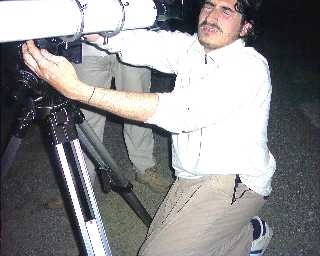
Carlo
(come accecare
un astrofilo che, dopo due ore di buio totale si e' adattato al buio ...) |
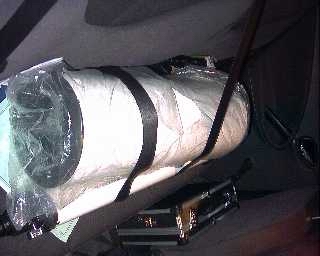
(come stressare
un telescopio ...) |
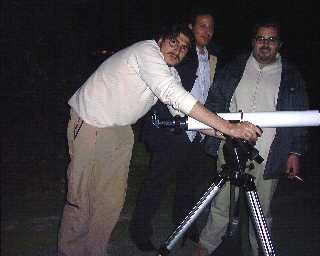
(lo so ...
lo so ... dopo sta flesciata e' difficile capire cosa puntare ... :))) |
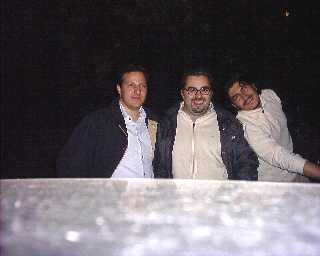 io Gianni
e Carlo
(tre astrofli
... " veri ") :)))
io Gianni
e Carlo
(tre astrofli
... " veri ") :))) |




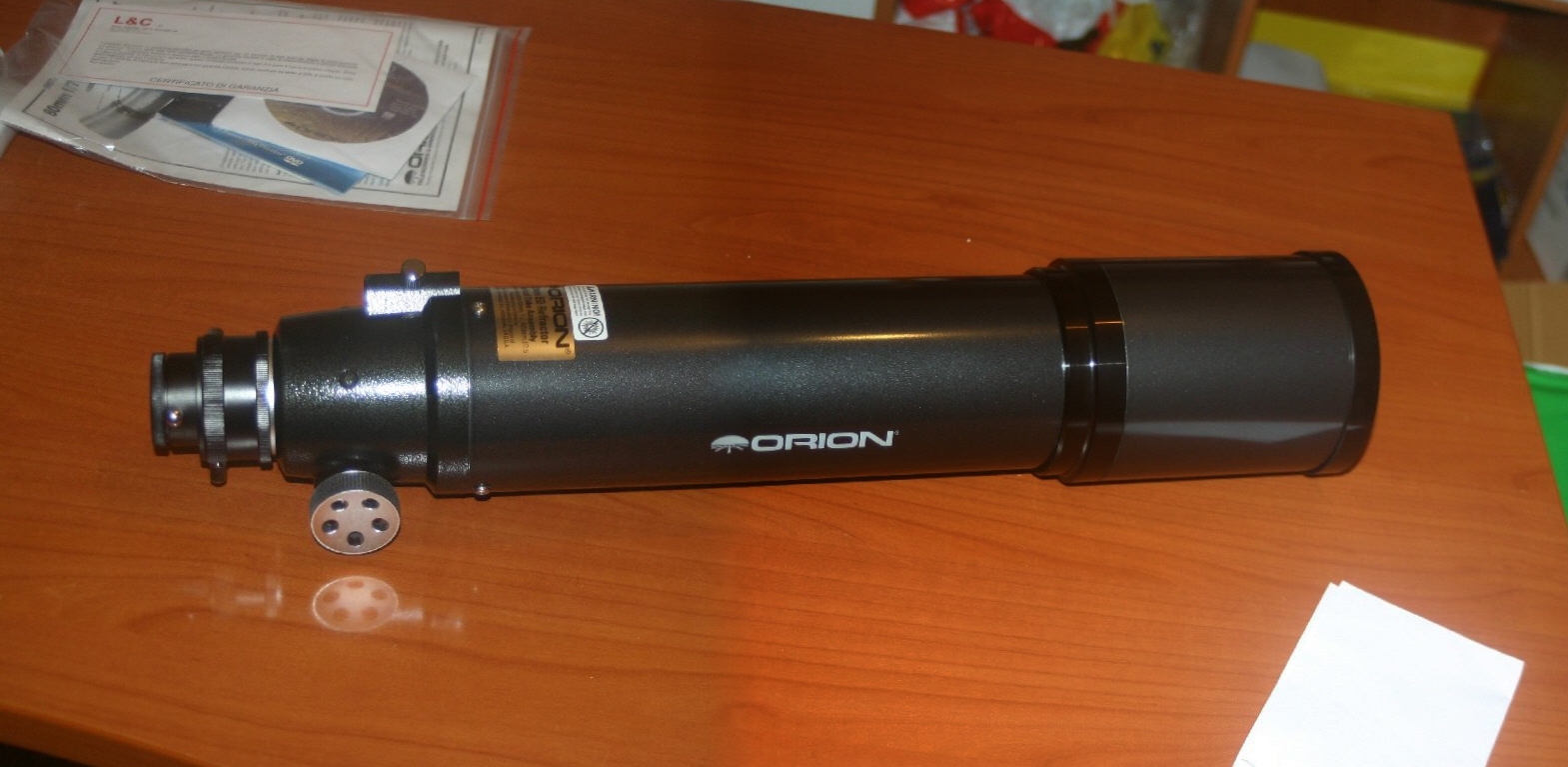
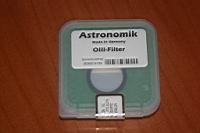
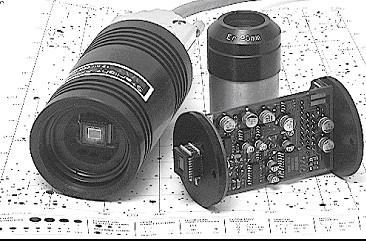


 STRUMENTAZIONE
PRECEDENTE
STRUMENTAZIONE
PRECEDENTE

